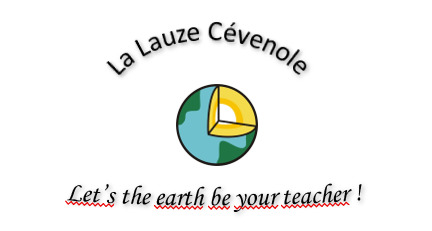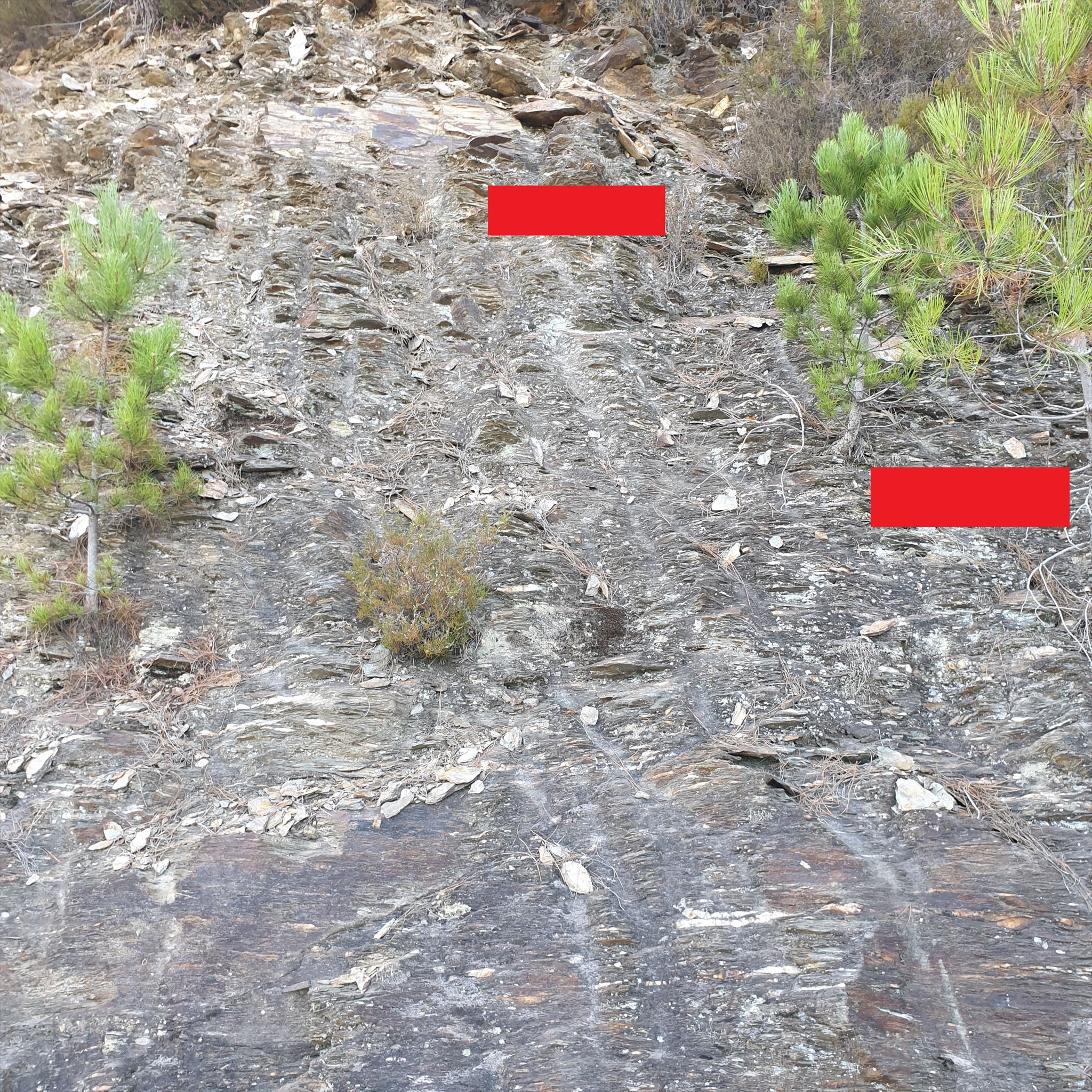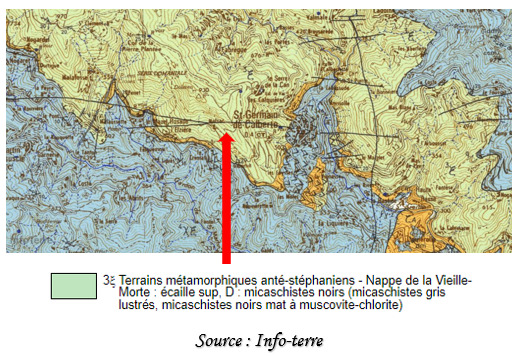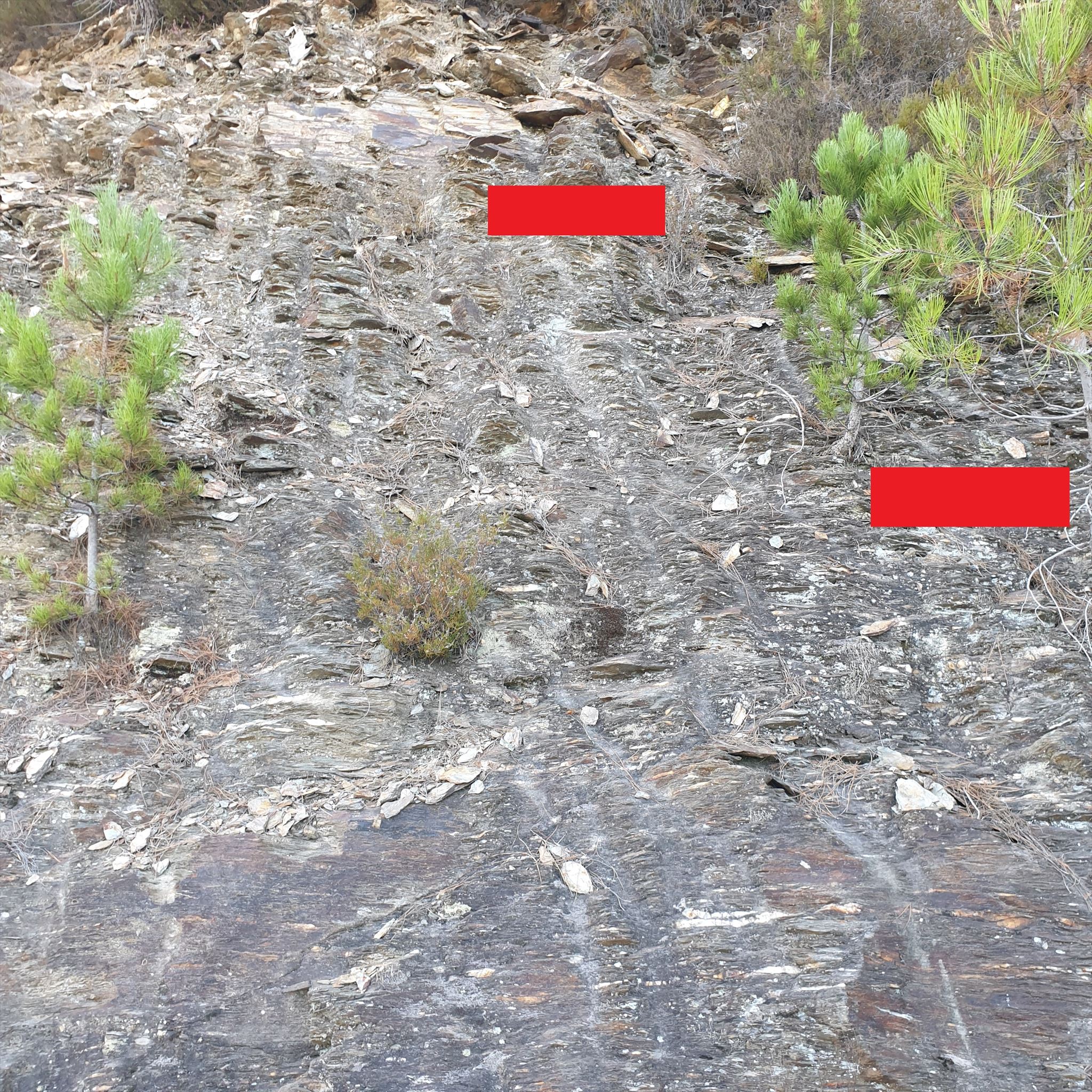
Bienvenue à St Germain de Calberte, petite commune de Lozère !
En montant à pied chercher de belles caches sur le chemin de Stevenson, j’ai repéré ce beau spot pour vous proposer cette earthcache !

St Germain de Calberte se situe au cœur du parc national des Cévennes, dans la continuité de la Vallée Française, et est traversée par un des nombreux « gardons » ! Côté ouest, le relief prend vite de l’altitude jusqu’à 1164m pour le Mont Mars (source : topographic-map). Son sous-sol provient de l’ère primaire, du socle ancien du Massif Central. Nous sommes donc en présence de roches métamorphiques (roches sédimentaires solidifiées) : des schistes et mica-schistes.

Les roches proviennent de sédiments déposés au fond d’un océan très ancien, il y a près de 500 Ma, qui ont ensuite été transformés en schistes lorsque la chaîne de montagne hercynienne s’est créée, il y a 340 Ma. Ce schiste sédimentaire s'est formé au fond d'une eau calme qui peut être une mer aussi bien qu'un lac. Il est composé de mica, de quartz et d'argile.
Il peut aussi contenir du fer ou du charbon. Dans ce cas, on parle de schiste noir. Sa particularité est d’avoir une structure en strates fines ou feuillets, ce qui permet de séparer les plaques les unes des autres : de nombreuses maisons cévenoles sont ainsi construites voire couvertes d’un toit de « lauzes ».

Leur couleur dominante est le bleu-gris, avec beaucoup de nuances ocres. Regardez à vos pieds, vous en verrez sûrement quelques-unes ! Le schiste étant une roche sédimentaire, elle se casse et se taille facilement, si vous frottez vos mains sur la paroi, vous aurez des grains très fins sur la peau.

Dans ces dépôts sédimentaires, se retrouvent aussi des filons de quartz qui diffèrent par leur couleur variant du blanc à l’ocre. Le quartz est un minerai de la famille des silicates, qui a comblé les anfractuosités de la roche encaissante. C’est une roche dure, très compacte, capable de rayer du verre.

Aux coordonnées de la page, vous vous trouvez face à un haut mur de roche. C’est ici que vous ferez vos observations pour répondre aux questions et valider cette earthcache :
- Durant quelle ère s’est formé le mica-schiste des Cévennes ?
- Décrivez les strates de la roche devant vous (épaisseur, couleur, régularité, etc), cela correspond-il à une roche sédimentaire ?
- Sous les encadrés rouges, en fonction de leur couleur, forme et dureté, quelle roche observez-vous ? Sa présence ici est-elle logique ?

4. Toute photo de votre passage sur la earth cache sera la bienvenue !
Rappels concernant les « EarthCaches » :
Il n’y a pas de contenant à rechercher aux coordonnées, ni de logbook à signer sur place. Il suffit de se rendre sur les lieux, de répondre aux questions ci-dessus, et de m’envoyer vos propositions de réponse via la messagerie geocaching.com (Message Center).
Vous pouvez loguer un « Found it » sans attendre ma confirmation. Je vous contacterai en cas de problème ou pour fournir d’éventuelles précisions.
Les « Found it » enregistrés sans envoi de réponses seront supprimés
Welcome to St Germain de Calberte, a small town in Lozère!
While going up on foot to look for beautiful caches on the way to Stevenson, I spotted this beautiful spot to offer you this earth-cache!
Geological context: St Germain de Calberte is at the heart of the Cévennes National Park, in the continuity of the French Valley, and is crossed by one of the many "roaches"! On the west side, the relief quickly increases in altitude up to 1164m for Mont Mars (source: topographic-map). Its basement comes from the primary era, from the old base of the Massif Central. We are therefore in the presence of metamorphic rocks (solidified sedimentary rocks): shales and mica-schists.

The rocks come from sediments deposited at the bottom of a very old ocean, almost 500 Ma ago, which were then transformed into shales when the Hercynian mountain range was created, 340 Ma ago. This sedimentary shale has formed at the bottom of still water which can be a sea as well as a lake. It is composed of mica, quartz and clay.
It may also contain iron or coal. In this case, we speak of black shale. Its particularity is to have a structure in fine strata or sheets, which makes it possible to separate the plates from each other: many Cévennes houses are thus built or even covered with a roof of “lauzes”.

Their dominant color is blue-gray, with many ocher nuances. Look at your feet, you will surely see some! Shale being a sedimentary rock, it breaks and cuts easily, if you rub your hands on the wall, you will have very fine grains on the skin.

In these sedimentary deposits, there are also quartz veins which differ in their color varying from white to ochre. Quartz is a mineral from the silicate family, which has filled in the crevices of the surrounding rock. It is a hard rock, very compact, capable of scratching glass.
At the coordinates of the page, you find yourself facing a high rock wall. This is where you will make your observations to answer questions and validate this earth-cache:
1. During which era was the mica-schist of the Cévennes formed?
2. Describe the strata of the rock in front of you (thickness, color, regularity, etc.), does this correspond to a sedimentary rock?
3. Under the red boxes, according to their color, shape and hardness, which rock do you observe? Does his presence here make sense?

4. . Any photo of your visit to the earth cache will be welcome!
Reminders about "EarthCaches":
There is no container to look for at the coordinates, nor a logbook to sign on site. Just go to the location, answer the questions above, and send me your suggested answers via geocaching.com messaging (Message Center).
You can log in a "Found it" without waiting for me to confirm. I will contact you if there is a problem or for having some more explanations.
“Found it” recorded without sending replies will be deleted.